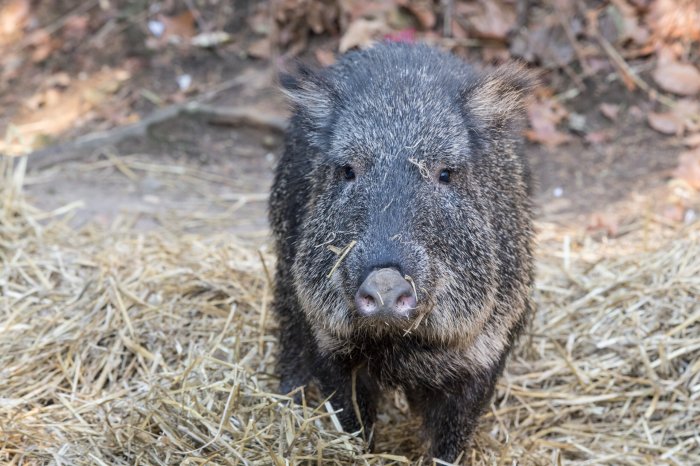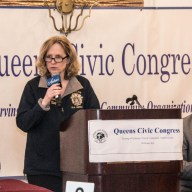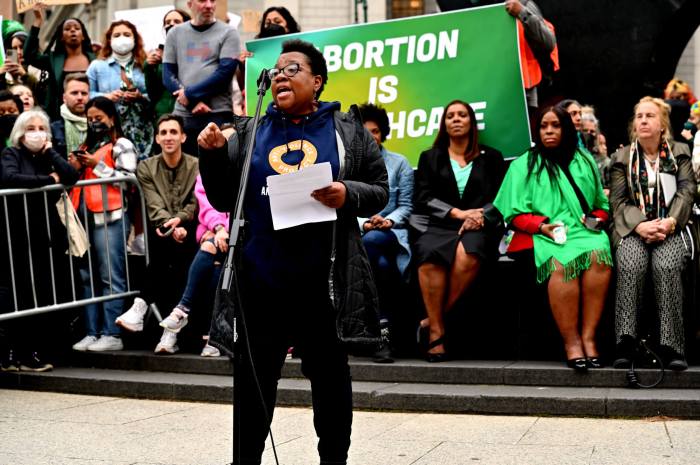By Ayala Ben-Yehuda and Tien-Shun Lee
Children from three Little Neck synagogues listened intently Monday to a man who described how he survived under the Nazi occupation of a Polish village during World War II as part of a commemoration on Holocaust Remembrance Day.
Members of Temple Torah of Little Neck, Marathon Jewish Center and Little Neck Jewish Center gathered at Temple Torah to hear essays, poetry and reflections by children about the Holocaust and to hear the story of David Gewirtzman, along with his family, who survived the Nazi terror by hiding underneath a pigsty in Poland for two years.
“On this night of all nights, the Jewish community belongs together and united,” said Rabbi Joseph Prouser of the Little Neck Jewish Center.
Children walked up to the stage in pairs, with each child holding a sign with the name of a concentration camp.
“The goal is to teach the lessons of the Holocaust to our young people,” said May Ladman, chairwoman of the event. “The way to teach them is to involve them.”
Young people read written reflections on the solemn observance submitted by their peers.
“I feel angry that Hitler was able to kidnap Jews and take them to concentration camps and kill them,” read one statement.
One boy said anti-Semitism could be prevented through educating the world about the Jewish people in schools and in movies.
“Then ignorance wouldn't cause hatred,” he said.
Gewirtzman, a member of the Little Neck Jewish Center and chairman of the Education Committee at the Nassau Holocaust Memorial Center in Glen Cove, L.I., told the hushed audience about his harrowing experiences in the Nazi-occupied Polish village 60 miles east of Warsaw where he grew up.
“Degradation, humiliation (and) persecution didn't cease from the first day the Germans marched in,” said Gewirtzman, who in 1942 was jailed as a child along with his sister when they dared come out of their family's first hideout to seek help.
“I will never forget the sight of a Nazi stepping down from a truck … and shooting an infant in his stroller,” he said.
Gewirtzman's sister was later hidden by a Polish policeman, his younger brother was concealed by a farmer in a haystack and the rest of his family lived in a pit under a pigsty until the Soviet army liberated the area.
The family fled to Italy and then in 1948 came to the United States, where Gewirtzman married another survivor and became a successful pharmacy owner.
The night's events concluded with a traditional memorial candle lighting, mourners' prayers and singing of the Partisan Hymn, a Yiddish song of Jewish resistance.
Holocaust survivors, accompanied by their grandchildren, lit six candles – one for every million Jews killed by the Nazis.
Though the evening was somber, Gewirtzman sounded a message of hope in quoting the last line from the Partisan Hymn:
“Like a drumbeat, our steps will proclaim, 'we are here,'” he said.
At the Hillcrest Jewish Center on Utopia Parkway in Fresh Meadows, Jean Bloch Rosensaft described the Bergen-Belsen Displaced Person Camp, where at least 50,000 survivors lived during the five years following the end of World War II.
Rosensaft, the director of the Hebrew Union College Jewish Institute of Religion in Manhattan, is the daughter of a survivor. She was the guest speaker during a Yom Hashoah remembrance service that included the lighting of six candles by Holocaust survivors and descendants of survivors. Each candle represented a million people who perished during the Holocaust.
The Bergen-Belsen camp, which was the largest Displaced Person camp to be established after the Holocaust, developed over time into a community with its own religious schools, trade school, newspaper, radio broadcast and Yiddish theater, said Rosensaft.
Many survivors married, and some 2,000 children were born in the camp during its existence, said Rosensaft.
“For everyone, the emphasis was on creating an atmosphere of living – living for the future and not for the past,” said Rosensaft, quoting Vida Kaufman, a representative of the Joint Distribution Committee, a post-Holocaust social service agency.
An exhibit on the Bergen-Belsen camp, which was curated by Rosensaft, is currently on display at the Hebrew Union College JIR Museum.
Anita White, a multi-lingual Jew, was part of the Steven Spielberg group that went to Auschwitz in 1995 to interview Holocaust survivors for a television show commemorating the 50th anniversary of the liberation of Auschwitz. She described Rosensaft's talk as moving and informational.
“The Holocaust could never be forgotten. This horrible, horrible cruelty should be a lesson for the world to live in peace,” said White. “We are all survivors because those were our brothers and sisters. The tragedy in one nation is a tragedy for all because all feel the pain of peoplehood.”
Reach reporter Ayala Ben-Yehuda by e-mail at Timesledger@aol.com or call 718-229-0300, Ext. 146.































